Research & Strategy:
Challenges Faced:
- Understanding Project Scope & Needs was a central challenge due to the differing maturity levels and requirements across products.
- Individual Strategic Approaches would be essential to achieving the needed improvements within project timelines.
- Co-Ordinating Multinational Resources to meet the goals of a worldwide relaunch.
What We Learned (Pains & Priorities):
- Flexible UX Strategies would be essential to managing the redesign of several different products, all at different stages of completeness.
- Institutional Siloing would need to be overcome through tight coordination across several different teams and disciplines.
High-Level Goals (OKRs):
- Increased Product Integration through the use of a comprehensively updated design system and cross-linking within product functionality.
- Increased Product Adoption by providing needed localization and accessibility upgrades.
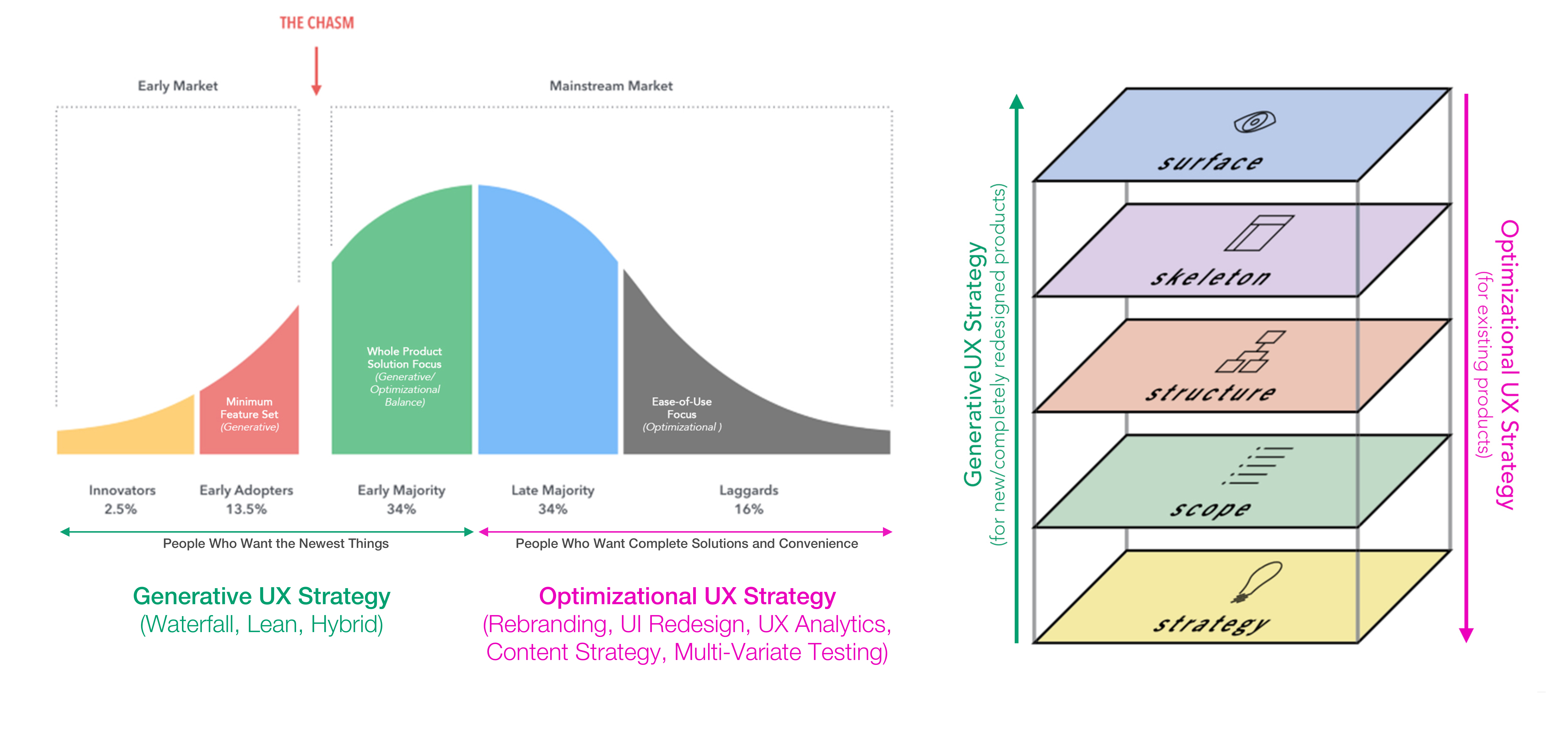 Individualized UX Strategies for Holistic Product Integration - To streamline and standardize the LNIP product family for an existing base of users, the UX team researched where each product was in terms of its life cycle, and what feedback/metrics were available for synthesis; armed with this information from customers, stakeholders, and subject-matter experts, we formulated an series of “optimization” strategies to address each product individually..
Individualized UX Strategies for Holistic Product Integration - To streamline and standardize the LNIP product family for an existing base of users, the UX team researched where each product was in terms of its life cycle, and what feedback/metrics were available for synthesis; armed with this information from customers, stakeholders, and subject-matter experts, we formulated an series of “optimization” strategies to address each product individually..
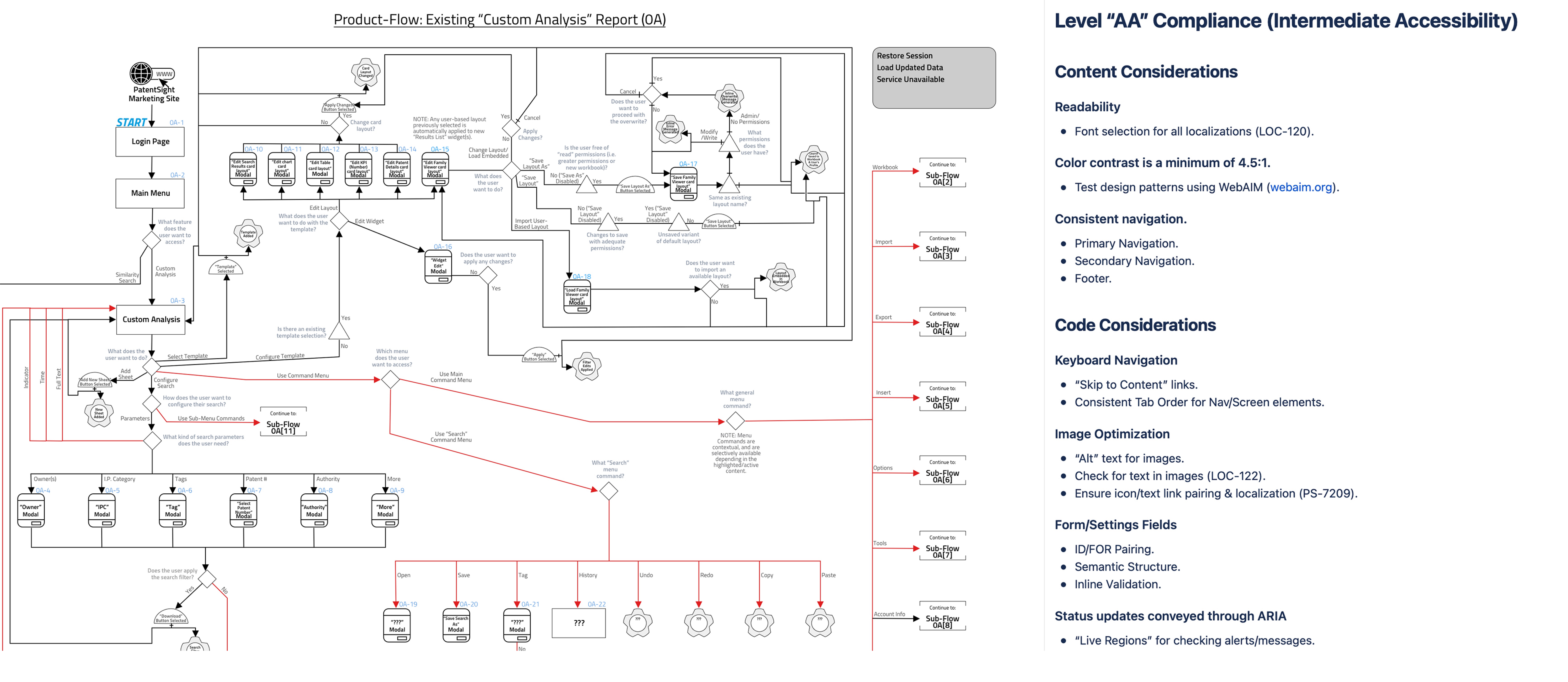 Greater Product Efficiencies via Product Flows & Accessibility Audits - With a strategy in place, mapping out each application and its processes was the crucial first step for ensuring a consistent and accessible experience. Identified issues were carefully catalogued and prioritized for ongoing redesign efforts.
Greater Product Efficiencies via Product Flows & Accessibility Audits - With a strategy in place, mapping out each application and its processes was the crucial first step for ensuring a consistent and accessible experience. Identified issues were carefully catalogued and prioritized for ongoing redesign efforts.
Designing for Accessibility:
What We Learned (Insights & Actions Taken):
- A Single Source-of-Truth was needed by nearly a dozen international teams to work in tandem on the entire product line.
- Flexible Design Best Practices were needed to accommodate a vast localization effort across new markets, with complex accessibility requirements being part of that expansion.
Value Generated (KPIs):
- Increased Cross-Product Adoption due to consistent workflows and seamless integrations.
- Increased User-Engagement through successful language localization and accessibility improvements.
- Increased Marketshare through adoption of the flagship product by the USPTO (United States Patent & Trademark Organization.
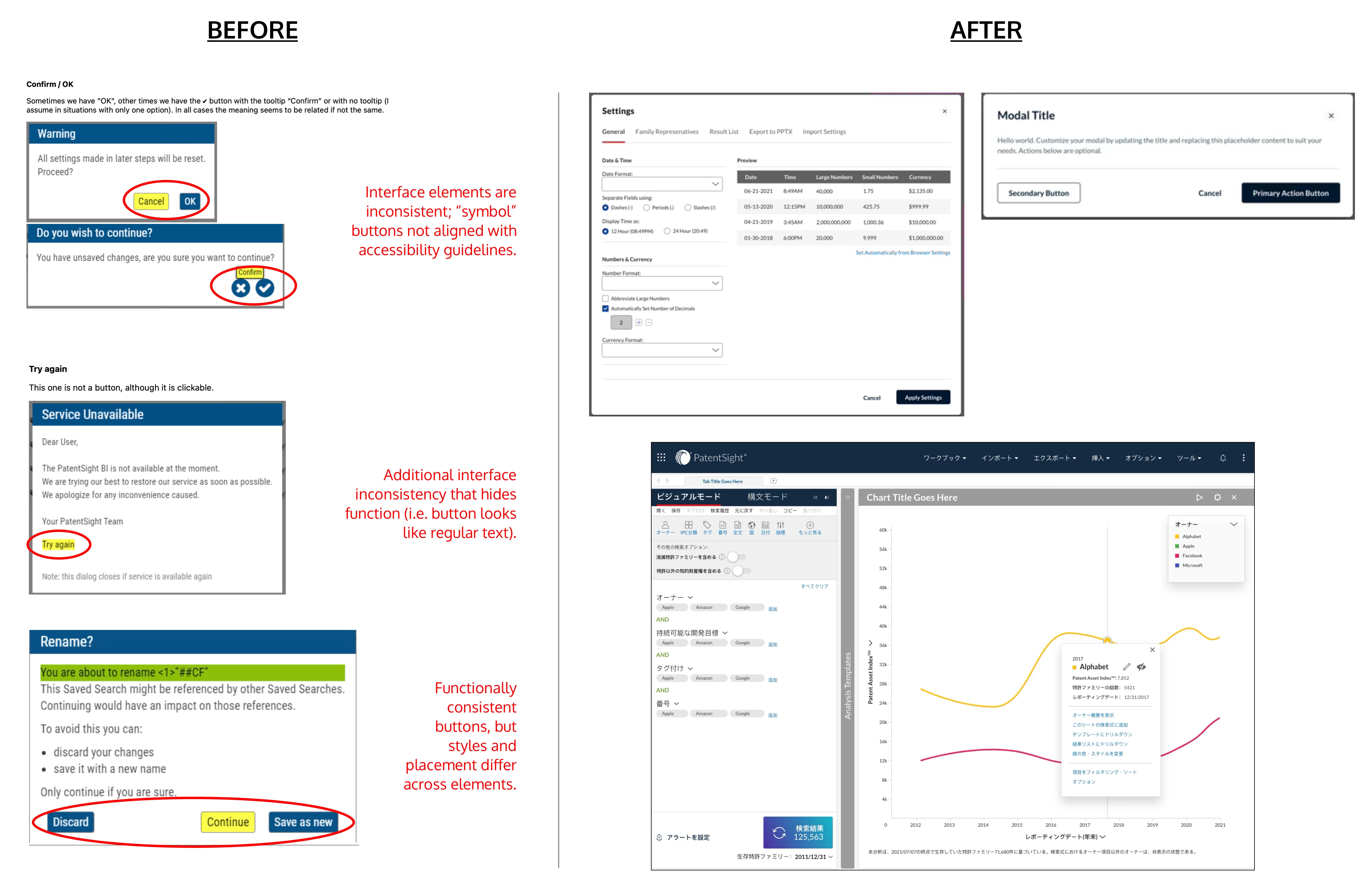 1-to-N Design System Redesign for Scalable Consistency - At the individual screen level, entire layouts (and their constituent elements) were completely redesigned to introduce consistent interactions and content across all products. These changes were also leveraged for ongoing accessibility and localization efforts.
1-to-N Design System Redesign for Scalable Consistency - At the individual screen level, entire layouts (and their constituent elements) were completely redesigned to introduce consistent interactions and content across all products. These changes were also leveraged for ongoing accessibility and localization efforts.
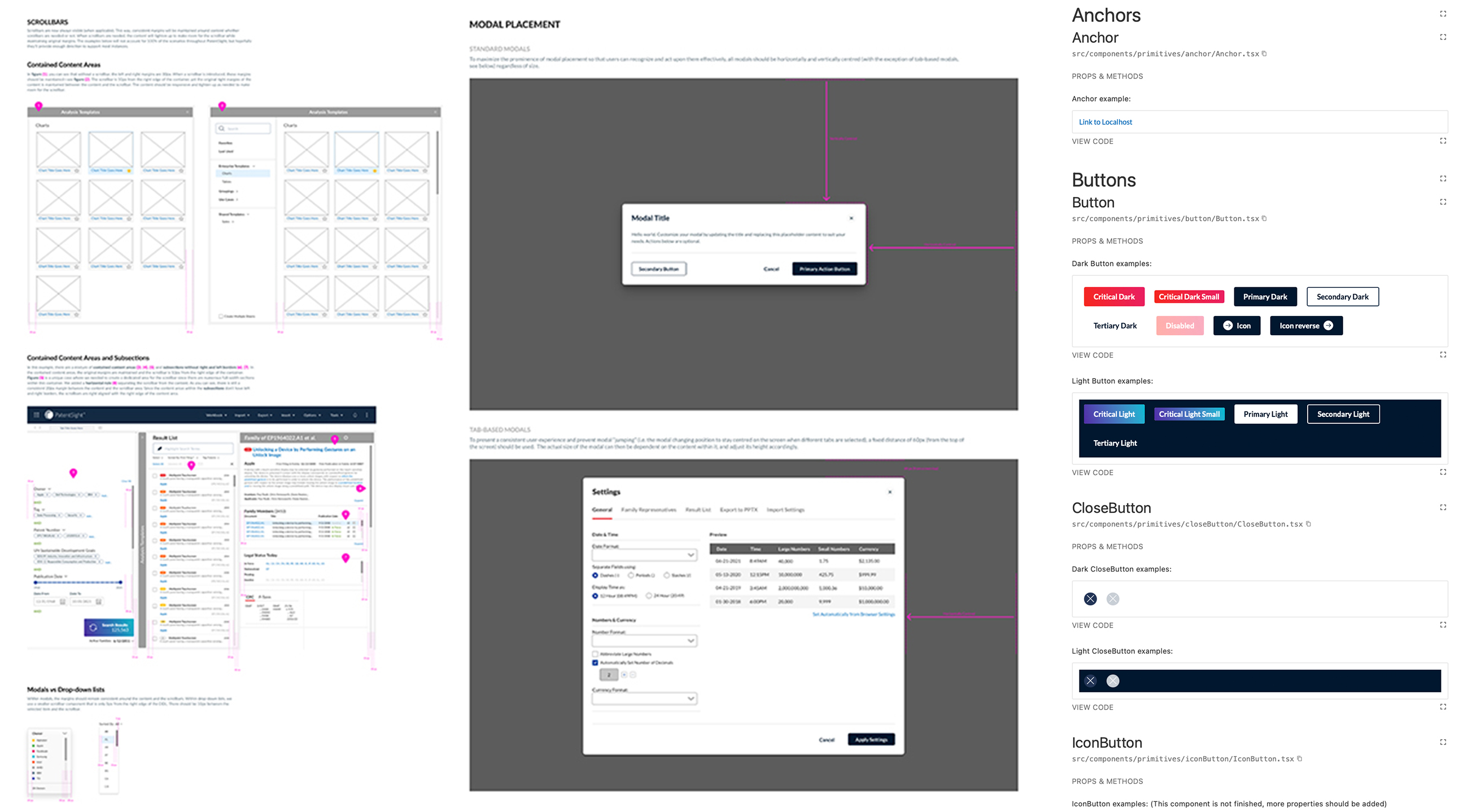 Product Consistency with an Expanded Design System - With accessibility and localization considerations in mind, the UX team build a highly-detailed Style Guide document to unify design patterns across all IP applications; these design rules/patterns were then coded into a Design System to streamline ongoing development work.
Product Consistency with an Expanded Design System - With accessibility and localization considerations in mind, the UX team build a highly-detailed Style Guide document to unify design patterns across all IP applications; these design rules/patterns were then coded into a Design System to streamline ongoing development work.
Testing & Optimization:
What We Learned (Feedback & Priorities):
- Prioritization was Key for ensuring the best return on investment with tight timelines and limited resources.
- Demonstration of Value was fundamental for stakeholder confidence as we approached the release date for the relaunch.
Value Generated (KPIs):
- Increased User Engagement through streamlined workflows and consistent design language.
- Reduced Development Costs through a standardized design system for all IP products.
- Shortened Production Times for market-ready products through careful prioritization of discovered refinements.
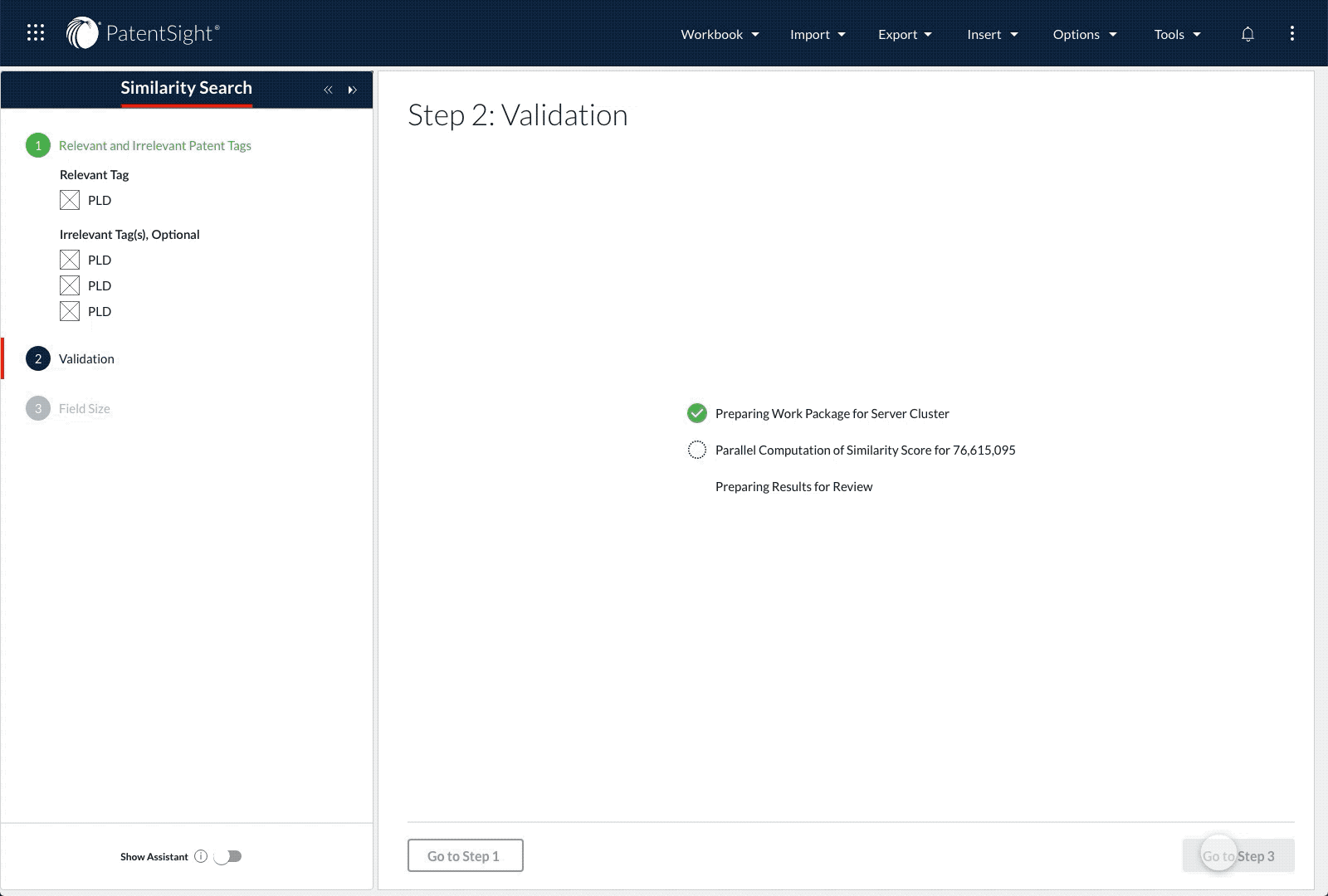 Localization & Accessibility through Usability-Testing with Interactive Prototypes - Using Adobe XD to produce mockups and clickable prototypes, the UX team tested every revised layout and feature exhaustively to ensure that users found the new designs understandable and easy-to-use; this was key to ensuring a better user-experience across all international product localizations while aligning to the overall LexisNexis brand standards.
Localization & Accessibility through Usability-Testing with Interactive Prototypes - Using Adobe XD to produce mockups and clickable prototypes, the UX team tested every revised layout and feature exhaustively to ensure that users found the new designs understandable and easy-to-use; this was key to ensuring a better user-experience across all international product localizations while aligning to the overall LexisNexis brand standards.
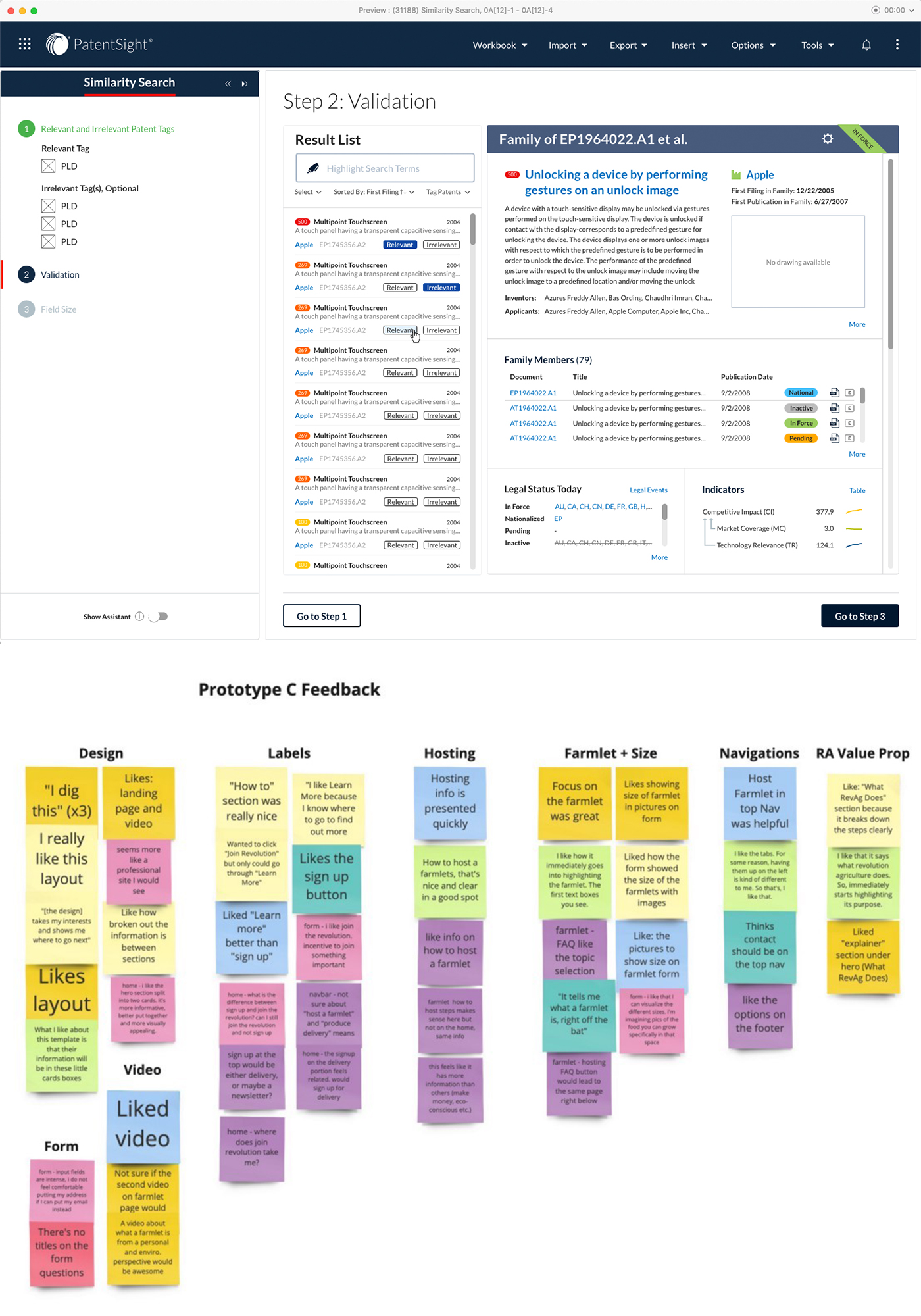 Tracking Progress with Affinity Mapping & Refinement Prioritization - After each round of usability-testing, issues were categorized and prioritized for additional design refinements and testing; an added benefit of involving the core product team in this effort was that it encouraged contributions from all team members, and fostered a greater sense of purpose and achievement.
Tracking Progress with Affinity Mapping & Refinement Prioritization - After each round of usability-testing, issues were categorized and prioritized for additional design refinements and testing; an added benefit of involving the core product team in this effort was that it encouraged contributions from all team members, and fostered a greater sense of purpose and achievement.